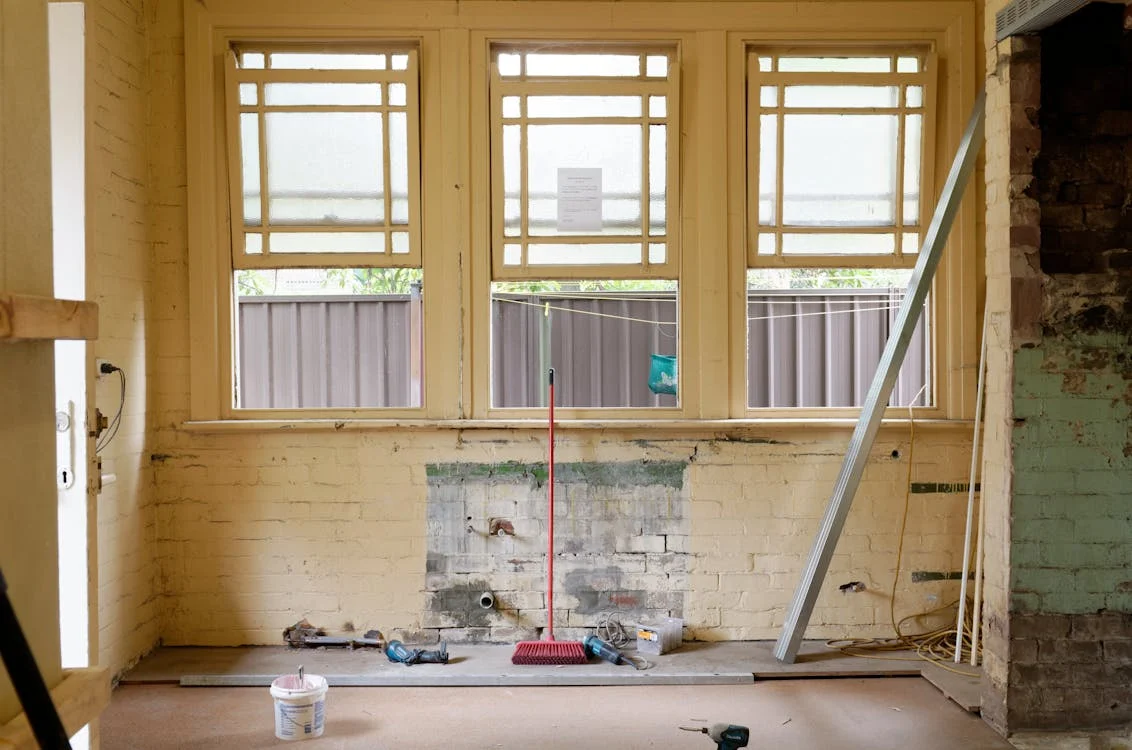Renovating an old office building can be a rewarding endeavor. After all, it offers the opportunity to breathe new life into a historic structure while creating modern, functional workspaces. At the same time, opting for a renovation job on an old building can also be cost-effective.
According to HomeGuide, commercial construction costs between $240 and $870 per square foot on average in the US. Warehouses and parking garages are less expensive to construct compared to high-rise office buildings, museums, or five-star hotels. The latter typically require higher budgets due to their intricate designs and luxurious amenities.
Renovating an old property, on the other hand, is more cost-effective as CBS News has stated. However, renovating doesn’t come without its challenges. From unexpected structural issues to budget overruns, there are several risks that can derail a renovation project if not carefully managed.
Today, we’ll explore a few key risks to avoid when renovating an old office building.
#1 Inadequate Planning and Assessment
Rushing into renovations without a clear understanding of the building’s condition, history, and potential challenges can lead to costly surprises down the line. It’s essential to conduct a comprehensive assessment of the building’s structure, mechanical systems, and historical significance before starting any renovation work.
Engaging with experienced architects, engineers, and historic preservation specialists can help identify potential issues early on and develop a realistic renovation plan.
#2 Unforeseen Structural Issues
Older buildings may conceal structural problems that aren’t immediately apparent during initial inspections. Issues such as deteriorating foundations, termite damage, or compromised load-bearing walls can significantly impact the renovation process. These structural issues not only pose safety risks but can also escalate renovation costs and timelines.
Also, according to TorHoerman Law, old structures can also lead to exposure to synthetic chemicals like polychlorinated biphenyl (PCB). Such chemicals are commonly used in the electrical manufacturing industry. Exposure to these PCB chemicals can cause health problems like cancer.
Common PCB exposure symptoms encompass skin problems, coughing, shortness of breath, headaches, fatigue, and disruptions to the endocrine system. To mitigate such chemical exposure risks, it is essential to implement a proper risk assessment of the building.
Prioritize a detailed structural assessment conducted by qualified professionals to uncover any hidden issues. Then, develop appropriate remediation strategies before proceeding with renovation work.
#3 Budget Overruns and Scope Creep
Renovating old office buildings can be unpredictable, with unforeseen challenges and changes in scope often leading to budget overruns. Without careful planning and monitoring, renovation projects can quickly spiral out of control, exceeding initial cost estimates and timelines.
To mitigate the risk of budget overruns and scope creep, establish a detailed project budget and schedule upfront, accounting for contingencies and unforeseen expenses. Regularly review and update the budget and scope throughout the renovation process, tracking expenses and identifying any deviations from the original plan.
Effective communication and collaboration among project stakeholders are essential to ensure everyone remains aligned with the project objectives and constraints.
#4 Environmental Hazards
According to First Choice Inspectors, older buildings often harbor environmental hazards such as asbestos, lead paint, or mold. These can pose serious health risks to occupants and workers if disturbed during renovation activities. Failure to address these hazards properly can lead to costly remediation efforts, regulatory penalties, and potential legal liabilities.
Conduct comprehensive environmental assessments before renovation work and implement appropriate mitigation measures to safely manage and remove hazardous materials. Engage qualified environmental consultants and contractors with experience in handling hazardous substances to ensure compliance with safety protocols and regulations.
#5 Disruption to Occupants and Operations
Renovating an old office building can disrupt the daily operations of tenants, businesses, or residents occupying the space. Construction noise, dust, and temporary closures of common areas can impact productivity, tenant satisfaction, and lease agreements.
Minimizing disruption to occupants requires careful planning and coordination of renovation activities, with clear communication and advanced notice provided to affected parties. Implement strategies such as phasing construction work, establishing alternate access routes, and scheduling noisy activities during off-peak hours to mitigate the impact on occupants.
Frequently Asked Questions (FAQs)
What are the risks of renovations?
Renovation risks include budget overruns, unexpected structural issues, delays, and potential damage to existing structures. Poor planning or execution can lead to safety hazards, diminished property value, and dissatisfaction with the end result.
What to consider when renovating an office?
When renovating an office, consider the layout for optimal workflow and productivity, incorporating ample lighting and ergonomic furniture. Ensure the design aligns with brand identity and fosters a positive work environment. Additionally, factor in technology upgrades, accessibility needs, and potential future growth to make the renovation sustainable.
What are the cons of renovating?
The cons of renovating include potential disruptions to daily business operations, such as noise, dust, and temporary loss of access to certain areas. Renovations can also be costly and may exceed the initial budget due to unforeseen issues or changes in design preferences, causing financial strain.
In conclusion, renovating an old office building presents a host of risks that must be carefully managed to ensure a successful outcome. However, with proper planning, these buildings can be transformed into vibrant spaces that preserve their historical character while meeting the needs of modern occupants.






